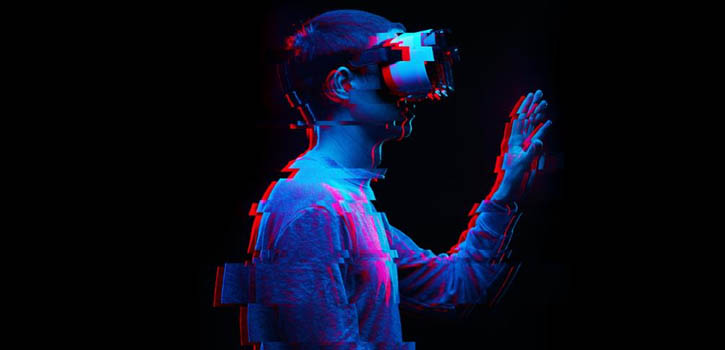What is Extended Reality?
The lack of skilled IT workers is hurting the deployment of emerging technology, according to a new survey from Gartner. In areas from cloud to cybersecurity, this crisis is expected to last for years to come.

The Global Extended Reality (XR) Market is expected to register a healthy CAGR of over 65% during the forecast period (2019-2024). By 2022, the XR market is expected to reach $209 billion, which is eight times what it is today.
The integration of XR across the business ecosystem will result from wide applicability across multiple enterprise verticals, with a form factor that supports all-day use and a clear ROI by the help of its manufacturing efficiencies that is currently being driven by the organizational inertia, enterprise risk aversion, and sales cycles.
Key Highlights
The convergence of the smartphone, mobile VR headset, and AR glasses into a single XR wearable could replace all the other screens, ranging from smartphones to smart TV screens. Mobile XR has the potential to become one of the world's most ubiquitous and disruptive computing platforms.
Companies are designing transformative XR experiences that capitalize on the potential of the human experience revolution using artificial Intelligence and Internet of Things.
The demand for immersive technology is driven through the rising application of artificial intelligence (AI), connected to the Internet of Things (IoT), and delivered through the cloud and integrated into systems.
Key Market Trends
Consumer Engagement is Gaining Traction Owing to the Emergence of Immersive Platforms
XR devices create the illusion to make people feel as if they are in an entirely new digital world. Such technologies have been praised for its ability to create virtual tours in the stores and destinations, rehabilitate brain injury, and virtually inspect the interior and exterior design of a car which no existing technology could do.
Given its enormous potential, XR technology has been increasingly applied and studied in a plethora of fields, ranging from tourism, education, retailing, gaming and healthcare to manufacturing.
Extended reality (XR) solution allows rich data to be easily accessible in a situational context, creating virtually unlimited opportunities in the market.
Future-thinking enterprises are incorporating extended reality into their internal processes as well as product and service delivery. It provides higher customer engagement, significant time efficiency improvement, and a significant reduction in human error.
Through immersive experiences, businesses can tap expertise in thousands of skills from anywhere in the world.
Across industries and applications, immersive experiences are pushing companies to not only think differently about what is possible but also to create new solutions that bypass the distance-based challenges they face today.
North America to Remain the Largest Market Over the Forecast Period
North America is one of the prominent regions for the extended reality market. It has also been a pioneer in the adoption of innovations, which provides North America with an edge over the other regions.
Educational institutions across the United States Department of Education is using a virtual platform to help students with autism and learning disabilities in schools, across the country.
In 2018, the Office of Special Education and Programs announced an investment of USD 2.5 million towards a new program that will use XR to nurture social skills in students with disabilities.
In the military and defense sector, the US Military is looking at immersive technologies for training purposes. The United States will also be investing as much as USD 11 billion by 2022 into virtual, augmented and mixed reality training systems, with extended reality becoming a primary focus of military innovation.
Competitive Landscape
The Extended Reality (XR) market is moderately competitive and consists of a few players. In terms of market share, some of the players are currently expanding their services across the emerging market. However, with the advancement in the immersive technology trend across the virtual platform, new players are increasing their market presence thereby enhancing their services as well as expanding their business footprint across the emerging economies.
Major players include:
Qualcomm Technologies, Inc.; Accenture PLC; Northern Digital Inc.; SoftServe Inc.; SphereGen Technologies.
XR Applications for Business
A glance at current use cases shows the potential for XR across industries:
Entertainment
XR brings immersive experiences to the entertainment world, and offers consumers an opportunity to virtually experience live music and sporting events from the comfort of their VR headset. While a majority of market share leans heavily towards entertainment, it's not the only one gearing up for a virtual expansion.
Marketing
Virtual realities have opened new ways for brands to engage with consumers, offering immersive ways to interact with new products.
Training
Extended reality opens new avenues for training and education. People who work in high-risk conditions – like chemists and pilots – can train in safety from a more conventional classroom setting. Medical students, meanwhile, can get hands-on practice on virtual patients.
Real Estate
Property managers can streamline the rental process by allowing potential tenants to view properties virtually, while architects and interior designers can leverage XR to bring their designs to life.
Remote Work
XR removes distance barriers, allowing remote employees to seamlessly access data from anywhere in the world.
Challenges of XR
Those developing XR technologies are battling with some of the challenges to mainstream adoption. First, XR technologies collect and process huge amounts of very detailed and personal data about what you do, what you look at, and even your emotions at any given time, which has to be protected.
In addition, the cost of implementing the technology needs to come down; otherwise, many companies will be unable to invest in it. It is essential that the wearable devices that allow a full XR experience are fashionable and comfortable as well as always connected, intelligent, and immersive.
There are significant technical and hardware issues to solve that include but are not limited to the display, power and thermal, motion tracking, connectivity and common illumination—where virtual objects in a real world are indistinguishable from real objects especially as lighting shifts.
Comments:(0)
Leave a Reply
